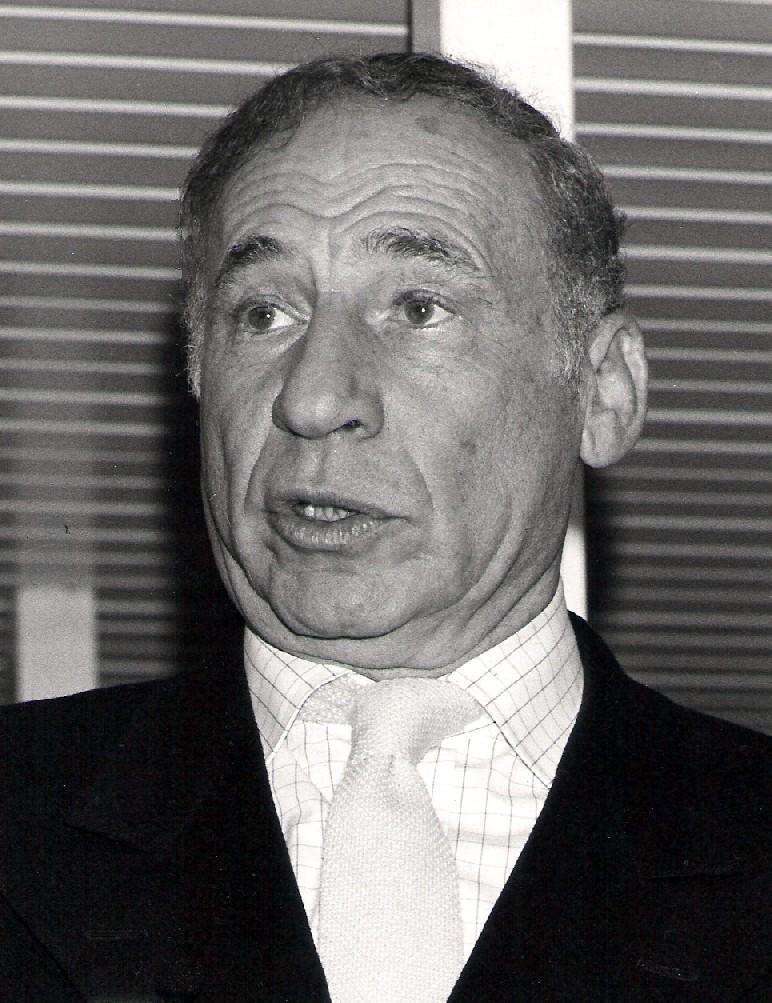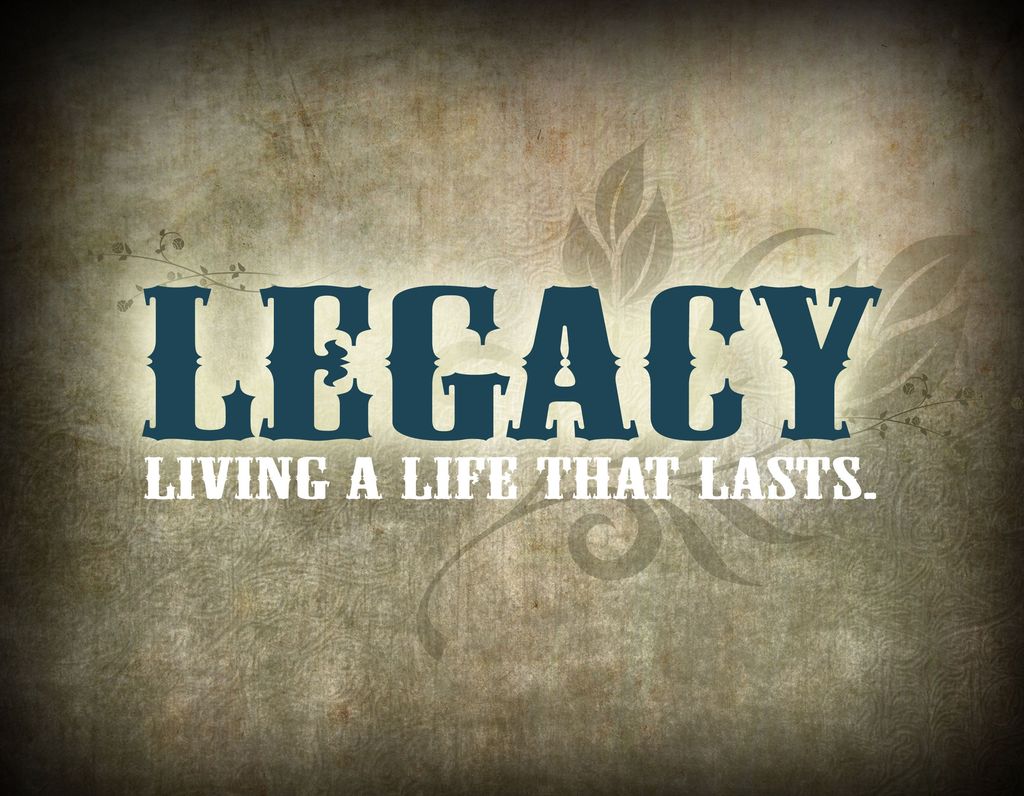
Alfa-Betty Olsen, a pivotal yet largely unsung figure in the annals of American comedy, passed away on October 5 in Manhattan at the age of 88. Her death marks the end of a remarkable career spent in the creative shadows, where her keen wit and discerning judgment quietly influenced some of the most enduring comedic works of the latter half of the 20th century. Ms. Olsen was not merely a collaborator; she was, in the words of writer Greg Vitiello, a “comic conspirator,” a title that aptly captures her profound impact on projects ranging from the groundbreaking sitcom “Get Smart” to the Academy Award-winning film “The Producers,” and later, a long and fruitful partnership with the actor and humorist Marshall Efron.
While her name might not be immediately familiar to the general public, her contributions were deeply felt by the creative giants with whom she worked. Mel Brooks, a master of irreverence and slapstick, relied heavily on her instincts, acknowledging her as an essential sounding board and a meticulous archivist of his rapid-fire ideas. Her ability to translate fleeting comedic genius into tangible scripts and cast the right faces for memorable characters speaks volumes about her unique talent and invaluable presence in the high-stakes world of show business. Her story offers a rare glimpse into the often-overlooked yet critical roles played by those behind the scenes, whose intellectual contributions are as vital as the celebrated performances on screen.
This exploration delves into the foundational aspects of Alfa-Betty Olsen’s extraordinary life and career, tracing her journey from her academic beginnings to her integral involvement in two of Mel Brooks’s most iconic creations. We will examine how her sharp intellect and unwavering support provided the scaffolding for comedic brilliance, illustrating how her seemingly ancillary roles as a recording secretary or “girl Friday” were, in reality, crucial positions of influence and creative collaboration, irrevocably shaping the tone and substance of a comedic era.

1. Early Life and Academic Foundations
Alfa-Betty Olsen’s journey into the world of creative arts began far from the bustling sets of television and film, rooted instead in a diligent and intellectually curious upbringing. Born on November 30, 1936, in Brooklyn, she was the daughter of Alf and Borghild (Seime) Olsen, both Norwegian immigrants. This heritage likely instilled a strong work ethic and a nuanced perspective that would later serve her well in her career.
Her academic pursuits were marked by an early aptitude and a drive for formal education. She demonstrated a clear commitment to learning by graduating from high school at the remarkably young age of 16, an achievement that hints at an exceptional intellect and an eagerness to engage with the world of ideas. This early success set a precedent for her future endeavors, where she would consistently prove herself capable of handling complex challenges.
Ms. Olsen continued her education at the University of Iowa, where she earned a bachelor’s degree in sociology in 1957. This field of study, which focuses on societal structures, human behavior, and cultural dynamics, would have provided her with a rich understanding of human nature and social interactions. Such a background would undoubtedly prove invaluable in her later work as a comic writer and casting director, roles that require a deep empathy for character and an acute sense of how humor functions within different social contexts. Her academic foundation thus laid the groundwork for a career that thrived on observation and insight.
Read more about: Seriously Where Did They Go? 16 Cult-Related Concepts That Vanished from Academic and Public Discourse.

2. Entry into Television with “Get Smart”
Ms. Olsen’s entry into the burgeoning world of television comedy was serendipitous, beginning with an unexpected call from Mel Brooks, with whom she had a social acquaintance. The specific circumstances of her hiring as a recording secretary for the pilot episode of the spy spoof “Get Smart” underscored the high-pressure, fast-paced environment of early television production. Mr. Brooks, facing a tight deadline, found himself in urgent need of someone who could accurately transcribe his and Buck Henry’s rapid-fire creative exchanges.
“One day, he said, ‘You can type, and I can’t,’” Ms. Olsen recalled in a 2018 PBS interview. “‘And I have to hand this in on Monday.’” This seemingly simple request initiated what would become a foundational collaboration, placing her directly at the epicenter of the creative process for what would become an Emmy Award-winning show. Her role required more than mere stenography; it demanded an ability to discern, capture, and organize the chaotic brilliance of two comedic masterminds working under intense pressure.
Sitting at a typewriter in a small office corner, her task was to “jot down rapid-fire one-liners and bonkers concepts like the shoe phone as ‘Mel and Buck threw around ideas and jokes and things.'” This description highlights the dynamic nature of her work, where she was not passively observing but actively curating and documenting the raw material of comedic innovation. It was in this seemingly modest capacity that Ms. Olsen first began to exert her quiet influence on the shape and direction of iconic television humor.
Read more about: Barbara Feldon: Beyond Agent 99 – An In-Depth Look at the Enduring Legacy of ‘Get Smart’s’ Iconic Star

3. Shaping “Get Smart”‘s Irreverent Tone
While her official title was recording secretary, Alfa-Betty Olsen’s influence on “Get Smart” extended far beyond mere transcription, profoundly contributing to the show’s distinctive and irreverent tone. She was an indispensable presence during the pilot’s creation, capturing the essence of Mel Brooks’s and Buck Henry’s improvisational brainstorming sessions. Her ability to “nail down every thought and every crazy joke and brushstroke of madness” was critical in transforming ephemeral ideas into a cohesive script.
Her own perspective on the role revealed a deeper understanding of its power. When asked if her job required more than being a stenographer, she assertively replied, “Whoever runs the typewriter has a lot of power.” This statement underscores her recognition of her agency within the creative process, suggesting that her meticulous record-keeping and organizational skills were not just technical but inherently influential. By deciding what was noted and how it was framed, she played a subtle yet significant part in codifying the show’s comedic voice.
Indeed, Mel Brooks himself later affirmed her crucial contribution in his 2021 memoir, “All About Me! My Remarkable Life in Show Business.” He specifically noted that Ms. Olsen “nailed down every thought and every crazy joke and brushstroke of madness we threw out. Nothing escaped her.” This candid acknowledgment from a legendary figure like Brooks illustrates the depth of her involvement and the trust he placed in her judgment and capabilities to capture the anarchic spirit that defined “Get Smart,” ensuring its unique brand of humor found its way to the screen.

4. Crucial Support for “The Producers”
Following her integral work on “Get Smart,” Alfa-Betty Olsen transitioned to another seminal Mel Brooks project, the 1967 film “The Producers,” where her role expanded significantly beyond that of a recording secretary. Here, she served as the casting director and, in Mr. Brooks’s own words, a “girl Friday,” a term that belies the extensive and multi-faceted responsibilities she undertook for the low-budget, yet creatively ambitious, production. Her involvement was central to bringing the film’s outrageous vision to life.
The movie itself, a comedic tour de force, revolves around a failing producer, Max Bialystock, and his meek accountant, Leo Bloom, who conspire to enrich themselves by orchestrating a guaranteed Broadway flop: “Springtime for Hitler.” This premise alone suggests the kind of project that would require immense creative support and an unshakeable belief in its audacious premise. Ms. Olsen’s presence provided precisely this kind of crucial underpinning, allowing Brooks to push comedic boundaries without reservation.
Her role as “girl Friday” encompassed a broad spectrum of tasks vital to the film’s realization, indicating a level of trust and reliance from Mel Brooks that went far beyond typical production assistance. This close collaboration was essential for a project that was purposefully “steeped in extravagant bad taste,” where every creative decision had to be carefully weighed and executed. Ms. Olsen was not just observing; she was actively facilitating the logistical and creative demands of an unconventional film, ensuring its unique artistic integrity.
Read more about: The Extreme Diet Trick: Unpacking Christian Bale’s Astonishing 60-Pound Transformation for ‘The Machinist’ and His Unparalleled Dedication

5. Encouraging Mel Brooks’s Vision
One of Alfa-Betty Olsen’s most significant, though often unpublicized, contributions to “The Producers” was her steadfast encouragement and validation of Mel Brooks’s boldest comedic instincts. Working on a film that deliberately flirted with the outrageous, Brooks frequently found himself questioning the limits of taste and acceptability. It was in these moments of creative doubt that Ms. Olsen’s judgment proved invaluable, serving as a vital touchstone for the director.
Mr. Brooks eloquently recounted her supportive role in his writings, highlighting how he would frequently turn to her for reassurance. “I would say things like, ‘Can I do this? Is this too crazy?’” he wrote, detailing the nature of their creative dialogue. Her consistent and unequivocal response — “And she’d say, ‘No, never too crazy for you’” — provided Brooks with the necessary affirmation to pursue his most audacious ideas, enabling the film to achieve its distinctively irreverent and groundbreaking comedic style.
This dynamic reveals Ms. Olsen as more than a mere assistant; she functioned as a muse and a trusted confidante, someone whose approval gave Brooks the confidence to push boundaries. In a project as provocative as “The Producers,” which lampooned the Third Reich through a Broadway musical, such encouragement was not simply helpful but essential. Her unwavering belief in his vision allowed “The Producers” to embrace its satirical edge fully, ultimately contributing to its critical acclaim and lasting impact.
Read more about: Unlock Billionaire Thinking: The 14 Essential Books Top Innovators and Leaders Read

6. Script Development and Iconic Scenes
Alfa-Betty Olsen’s contributions to “The Producers” extended directly into the film’s narrative fabric, influencing both its script development and the creation of one of its most memorable scenes. Beyond her casting duties and role as a general production assistant, she was actively involved in shaping the screenplay, a script that would ultimately earn Mel Brooks an Academy Award for best screenplay. Her insightful input helped refine the comedic timing and narrative flow, making the story as potent as it was audacious.
A specific testament to her creative influence is her role in conceiving the iconic Revson Fountain scene. While conducting musical research at the Lincoln Center Library for the Performing Arts, she noticed the fountain and immediately recognized its potential as a backdrop for a pivotal moment in the film. Her discerning eye envisioned it as “an ideal location for Bialystock and Bloom to celebrate their corrupt union,” a suggestion that Mel Brooks readily embraced, recognizing its narrative and visual power.
The scene, which culminates with Leo Bloom joyfully running and skipping around the fountain’s edge as jets of water soar, declaring, “I’m Leo Bloom! I’m me! I can do whatever I want!”, is a moment of pure, unadulterated cinematic elation. Ms. Olsen’s perceptive observation and creative proposal transformed a simple background element into a symbol of freedom and newfound identity for one of the film’s central characters, solidifying her tangible impact on the film’s lasting imagery and narrative success.
Read more about: Beyond the Script: 10 WWE Confrontations Where Real-Life Hatred Fueled Unforgettable Rivalries

7. Casting Challenges and Decisions
As casting director for “The Producers,” Alfa-Betty Olsen faced the challenging task of finding actors capable of embodying the film’s larger-than-life and often bizarre characters. Her discerning judgment was crucial in assembling a cast that could navigate the delicate balance between outlandish comedy and sharp satire. One of the most notable casting stories involves the character of Franz Liebkind, the mentally unbalanced, helmet-wearing Nazi who pens “Springtime for Hitler.”
Ms. Olsen recounted to Vanity Fair how a young, then-unknown theater actor named Dustin Hoffman lobbied intensely for the role. “But of course that was impossible,” she stated, explaining that “Nobody wanted him to be the German.” This anecdote illustrates the complexities of casting and the sometimes-counterintuitive decisions that must be made, even when a talented actor expresses interest. While Hoffman did not secure the role, he soon achieved stardom in “The Graduate,” a film notably starring Mr. Brooks’s wife, Anne Bancroft, highlighting the interconnectedness of the Hollywood ecosystem.
Another pivotal casting decision involved the role of Roger De Bris, the flamboyantly gay director of “Springtime.” Kenneth Mars, who would eventually play Liebkind, initially auditioned for De Bris but preferred the Nazi playwright role. Despite initial reluctance from Mel Brooks, Ms. Olsen, by her own account, insisted, and Brooks eventually relented. This instance further underscores her persuasive power and her commitment to fitting the right actor to the right part, even when it required convincing the director against his initial inclinations. Christopher Hewett ultimately took on the part of De Bris, completing a cast that brought Brooks’s vision to life with memorable performances.
Read more about: Don’t Buy These Used Cars: 30 Models Known for Costly Problems

8. Forging a New Partnership with Marshall Efron
Following her foundational work with Mel Brooks, Alfa-Betty Olsen embarked on an extensive and equally influential collaboration with the actor and humorist Marshall Efron. This partnership, which began in the early 1970s, marked a new chapter in her career, characterized by her continued role as a creative force largely operating from behind the scenes. It was a relationship that would endure for decades, spanning various television series and literary projects, solidifying her reputation as a uniquely gifted comedic talent.
Her first significant project with Mr. Efron was the quirky PBS series “The Great American Dream Machine,” which premiered in 1971. This innovative program was an eclectic mix of short comic films, cartoons, music, investigative journalism, and humorous sketches, reflecting the experimental spirit of public television at the time. Ms. Olsen’s involvement was instrumental in shaping the show’s distinctive voice and its often unconventional approach to humor, contributing significantly to its overall creative direction.
Mr. Efron, who was both a writer and one of the stars of “The Great American Dream Machine,” found in Ms. Olsen an ideal creative foil and collaborator. Their working dynamic quickly drew attention from critics who recognized the depth of their synergistic efforts. It was during this period that the writer Greg Vitiello, in a newspaper column, lauded her as Mr. Efron’s “comic conspirator,” a title that would come to define her unique contribution to their shared endeavors.
This epithet perfectly captured the essence of her role: a vital, intellectually engaged partner working in tandem with Efron to craft humor that was both insightful and unexpected. She was not merely an assistant but an active participant in the comedic alchemy, ensuring their ideas translated into engaging and memorable content for public television audiences.
Read more about: From Hollywood to Your Table: 14 Celebrities Who Are Quietly Rocking the Restaurant Scene Across the US!

9. The Essence of a “Comic Conspirator”
The designation of “comic conspirator” was more than a catchy phrase; it was an accurate description of Alfa-Betty Olsen’s modus operandi, especially within her collaboration with Marshall Efron. Her role extended beyond traditional writing, encompassing a unique blend of conceptual development, thematic shaping, and the meticulous crafting of humor that was often unconventional and thought-provoking. This partnership thrived on a shared vision for satirical and often absurd comedy that challenged viewers’ perceptions.
Her contributions to “The Great American Dream Machine” segments exemplify this conspiratorial spirit. For instance, she and Mr. Efron delved into a diverse array of subjects, ranging from seemingly mundane topics like flags and water beds to more elaborate explorations of auto graveyards and much else. Their humor was derived from an acute observation of everyday life, twisted into comedic narratives that were both accessible and subtly subversive.
One particularly memorable segment from their collaboration illustrates the depth of their comedic ingenuity: an exploration of “how to write your own famous last words.” In this piece, Mr. Efron humorously encouraged viewers to plan ahead for their final moments, asserting that “in all your life, you will have only one opportunity to die.” This kind of darkly whimsical humor, carefully constructed and delivered, was a hallmark of their work together, requiring Ms. Olsen’s precise touch to ensure its impact.
Her ability to take a provocative concept and mold it into a coherent, amusing, and thought-provoking segment was a testament to her creative prowess. As a comic conspirator, she was instrumental in translating Efron’s performative genius into structured, impactful comedic narratives, leaving an indelible mark on the landscape of public television humor.
10. “Marshall Efron’s Illustrated, Simplified and Painless Sunday School”
Building on the success and creative synergy established with “The Great American Dream Machine,” Alfa-Betty Olsen and Marshall Efron extended their unique brand of humor into an unlikely yet immensely popular realm: religious education. In 1973, they premiered “Marshall Efron’s Illustrated, Simplified and Painless Sunday School,” a Sunday morning television show designed to humorously enact Bible stories for children, which went on to run for four successful seasons.
This series exemplified their distinctive approach to making complex or traditionally solemn subjects engaging and accessible through comedy. Rather than reverently recounting biblical tales, Ms. Olsen and Mr. Efron found the inherent humor and relatable human elements within these ancient narratives, presenting them in a fresh, often satirical light that captivated young audiences without trivializing the source material.
What was perhaps most surprising about the show was its reception. Contrary to what one might expect from a humorous take on religious stories, Ms. Olsen later told The Boston Globe in 1981, “Everybody thinks we outraged the fundamentalists, but it’s not true.” She clarified that the program not only avoided controversy but “received awards from church groups, and letters saying Sunday schools were using our show as part of their studies.”
This positive and widespread acceptance underscored the effectiveness of their comedic method. It demonstrated Ms. Olsen’s and Mr. Efron’s skill in crafting content that could both entertain and educate, transcending potential cultural or religious barriers through the universal appeal of well-executed humor. Their ability to find common ground and delight audiences from diverse backgrounds was a testament to their collaborative brilliance.

11. Translating Humor to the Page: “Bible Stories You Can’t Forget”
The successful television series on biblical themes naturally led Alfa-Betty Olsen and Marshall Efron to translate their distinctive comedic approach into literature. They continued their exploration of religious narratives with the 1976 book, “Bible Stories You Can’t Forget — No Matter How Hard You Try.” This publication cemented their status as co-authors and further showcased their ability to inject wit and relatability into well-known tales.
The book maintained the playful, irreverent, yet insightful tone that had made their television show so popular. It was designed to make biblical stories memorable for children, often by focusing on the more human, and sometimes comically flawed, aspects of the characters and their situations. Their shared vision for humor ensured that the written word carried the same charm and cleverness as their on-screen collaborations.
One illuminating example from the book highlights their knack for finding humor in the everyday struggles depicted in ancient texts. A story noted how profoundly irritable it made Joseph’s siblings to constantly hear about his impeccable behavior. They were particularly annoyed to learn “how good he always was, making his bed and taking all his own dishes to the sink ‘without anybody having to ask him.’” This relatable, modern-sounding grievance injected fresh life into a classic narrative, resonating with young readers and their parents alike.
Adding a personal touch to their creative partnership, Ms. Olsen and Mr. Efron shared a proximity that extended beyond their professional lives. For many years, they lived just six floors apart in the same building in Greenwich Village. This close residential arrangement likely fostered an environment conducive to their prolific and sustained collaboration, allowing their ideas to flow freely and spontaneously across both television and literary projects.
12. Further Literary Endeavors: “Omnivores” and “Gabby the Shrew”
Beyond their popular biblical adaptations, Alfa-Betty Olsen and Marshall Efron continued their literary partnership with several other unique book projects, demonstrating the breadth of their shared comedic interests. Their collaborations explored diverse subjects, always infused with their signature wit and an engaging, accessible style that appealed to a wide readership, from adults interested in culinary satire to young children captivated by whimsical tales.
One such publication was “Omnivores: They Said They Would Eat Anything — and They Did!” released in 1979. This book offered a humorous examination of high and low cuisine, playfully delving into the myriad eating habits of humanity. To underscore its comedic authenticity, the book even featured an “affidavit” from none other than Mel Brooks, attesting to having personally witnessed the authors consume the varied and sometimes outlandish items they claimed. This detail further connected Ms. Olsen’s career arcs, showcasing the enduring respect and affection among her creative circle.
Their partnership also extended to children’s literature with “Gabby the Shrew,” published in 1994. This charming book introduced readers to a mole-like mammal, brought to life through illustrations by the celebrated cartoonist Roz Chast. Ms. Olsen’s ability to craft engaging narratives for younger audiences, combined with Efron’s distinct comedic voice, created a delightful reading experience that further diversified their body of work.
Roz Chast herself fondly recalled her experience collaborating with Ms. Olsen, offering a glimpse into her character. In an email, Ms. Chast stated, “I remember that she was lovely — funny and sweet, and a perfect partner in some undefinable way for Marshall Efron.” This tribute from a fellow creative mind underscores not only Ms. Olsen’s personable nature but also her indispensable role as a supportive and inspiring colleague, solidifying her reputation as a cherished collaborator.

13. The Nature of a Behind-the-Scenes Career
Despite her profound and wide-ranging influence on iconic comedic works across television and film, Alfa-Betty Olsen’s career largely remained “under the radar.” Her name, though deeply revered by her collaborators, never achieved the widespread public recognition associated with figures like Mel Brooks or Marshall Efron. This phenomenon is not uncommon in the creative industries, where many crucial contributions are made away from the spotlight, yet it prompts reflection on the nature of creative ambition and fulfillment.
Her roles, whether as a recording secretary, casting director, or co-author, consistently placed her in positions where her intellect and judgment were vital, but her public persona remained secondary to the projects themselves. She was a silent architect of humor, shaping narratives and performances without seeking individual acclaim. This quiet dedication allowed her to fully immerse herself in the creative process, prioritizing the work over personal celebrity.
The context of her time also sheds light on this dynamic. In an era when behind-the-scenes roles were often less spotlighted than they might be today, Ms. Olsen carved out a career of consistent, impactful contribution. Her story highlights the countless individuals whose intellectual gifts and tireless efforts are indispensable to the creation of cultural touchstones, even if their names aren’t on marquees.
Ultimately, her preference for working in the creative shadows suggests a profound satisfaction derived from the act of creation itself, rather than from external validation. Her ability to operate effectively and meaningfully in such capacities speaks volumes about her self-assurance and the intrinsic value she placed on contributing to comedic excellence, regardless of the public recognition it garnered.
Read more about: Oops! Did I Just Meet Them? 14 Times Fans Got Their Favorite Celebs ALL Mixed Up (And the Hilarious Results!)

14. An Enduring Legacy of Quiet Influence
Alfa-Betty Olsen’s passing at 88 marked the end of an extraordinary career that, despite its largely uncredited nature, left an indelible mark on American comedy. Her journey from academic foundations to being a foundational force behind “Get Smart” and “The Producers,” and then a prolific partner to Marshall Efron, paints a picture of a singular talent whose influence far outstripped her public visibility.
Her legacy is perhaps best understood through the words of those who knew and worked with her. Patrick McGilligan, Mel Brooks’s biographer, offered a particularly insightful perspective, noting that Ms. Olsen had been “happy to work for little recognition just to be in the same orbit of show-business personalities she admired.” This sentiment speaks volumes about her character and her motivations, suggesting a deep love for the craft and the collaborative process itself.
Mr. McGilligan further elaborated on her unique disposition, describing her as a “very funny, smart, serious writer who had not really the same drive and ambition to blaze her name in the sky the way Mel does, and was happy to serve for a while as his muse and as his typist and as his secret helper.” These descriptions firmly establish her as far more than an assistant; she was an intellectual partner, a creative catalyst, and a trusted confidante who provided the essential scaffolding for comedic genius.
Alfa-Betty Olsen’s story serves as a powerful reminder of the vital, often unseen, contributions that shape our cultural landscape. Her quiet brilliance, unwavering support, and keen comedic instincts enriched the lives of audiences for decades, proving that profound influence does not always require a starring role. Her enduring legacy lies in the timeless humor she helped create, a testament to the power of the “comic conspirator” who made the absurd, the outrageous, and the biblical, utterly unforgettable.
Read more about: Wrestling Legends Gone Too Soon: Tragic Early Departures from the Squared Circle
In reflection, Alfa-Betty Olsen’s narrative is a compelling testament to the multifaceted nature of creative success. It highlights the indispensable role of those who operate behind the glare of the spotlight, whose intellect, wit, and unwavering dedication provide the very foundation for artistic triumphs. Her ability to shape iconic comedy, from the frantic pace of a sitcom writers’ room to the nuanced humor of children’s literature, underscores her singular talent and her profound, if often unsung, contribution to the tapestry of American entertainment. She was, in every sense, a true architect of laughter, whose work will resonate for generations to come.





